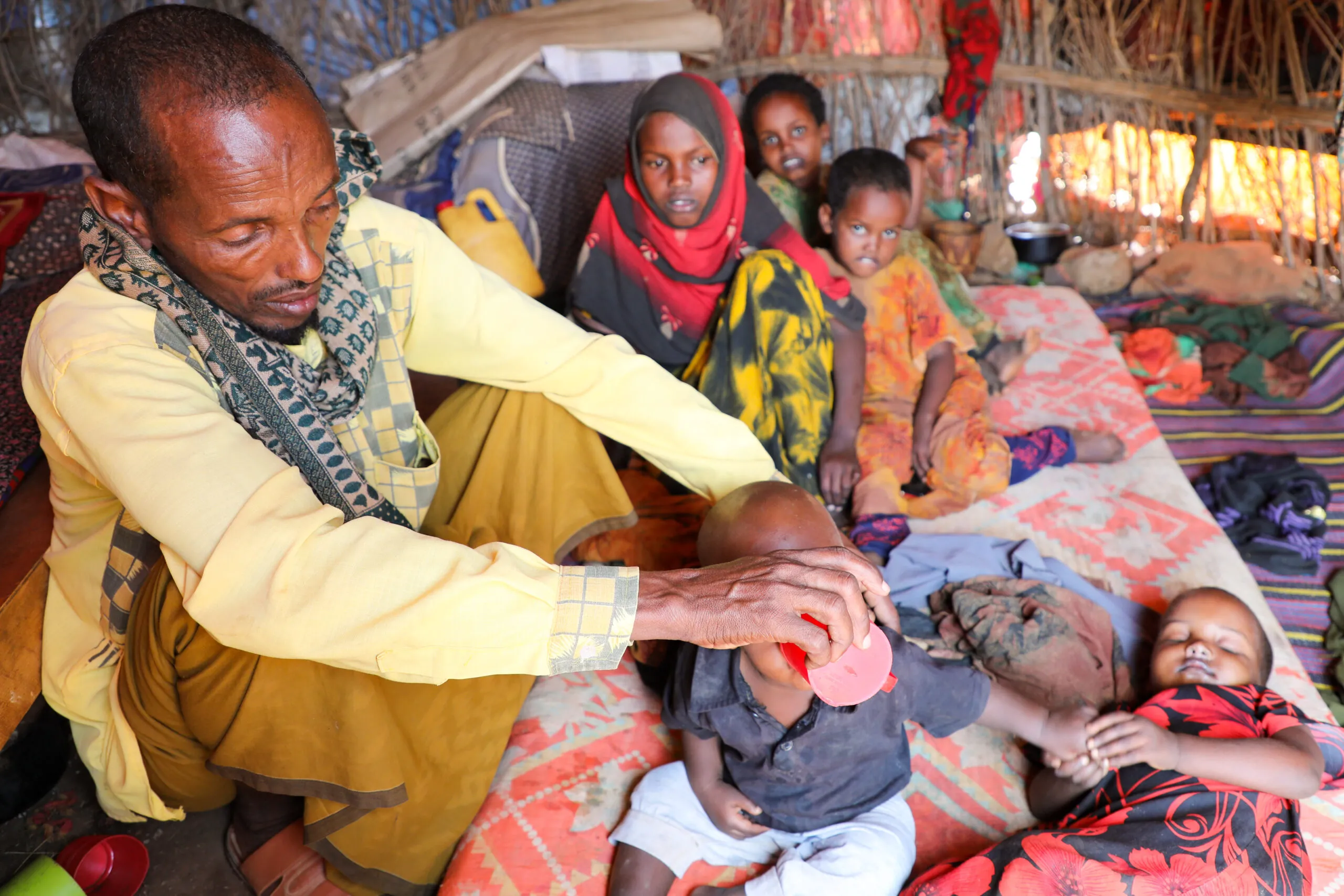With almost 6.7 million people hungry, over 4 million livestock dead, 32%-75% of cereal harvests failed, an increase in food prices, and flooding in several areas, Somalia is facing a worsening crisis. Somalia’s worst food crisis in 40 years is largely due to climate change. Two desert locust infestations, five failed rains, and heightened insecurity are some of the contributing factors. This has led to the internal displacement of more than 3.6 million people since 2021 according to UNOCHA. Many of the internally displaced people (IDP) find refuge in Banadir, Southeastern Somalia -which currently hosts over 800,000 people.
In Baidoa, where there are over 265,000 IDPs, Bare- a 47-year-old father of nine children – is settling in one of the camps that continues to grow every day. “The drought destroyed our crops and killed the few animals we had. We migrated here in search of food and water. It took my family 30 days to get here. Soon after we arrived, my wife, who was weak and sick due to hunger, died,” Bare said.
Bare’s story is one that can be heard in several places as many people are dying. “The drought already caused over 43,000 deaths in 2022, with half of these recorded among children younger than five years. The response to the crisis was slow and now there’s a lot more that needs to be done in order to save lives. With about 1.8 million children suffering from malnutrition and millions more going hungry, we continue to call on donors to not forget Somalia. The time for inaction has passed. We must ensure all sectors are funded to alleviate the suffering of so many,” said Ummy Dubow, CARE’s Deputy Country Director for Programs.
Like many others, Bare’s life has entirely changed. “I am now playing the role of both parents; I care for all the nine children alone. I do not have a job or any source of income. I stay home, cook food for my children, and fetch water for them. I clean their clothes,” Bare said.
CARE In Somalia works with a local partner, GREDO, in several camps like the one Bare is in, providing water, sanitation, and hygiene services, education in emergencies for drought-displaced children, and food and income support in the form of cash assistance. Through a network of 92 health facilities and 82 mobile health sites, CARE provides lifesaving treatment for acute malnutrition and communicable diseases and ensures access to safe maternal and child healthcare.
More needs to be done in Somalia to resolve the immediate humanitarian needs of the communities. It will require a comprehensive and concerted approach by all. As governments and donors plan to meet for the Horn of Africa Pledging conference on 24th May 2023 in New York, CARE is calling upon attendants to not only pledge but also avail funding to support the Somalia Humanitarian Response which is currently only 23.4% funded.
Images and Videos can be accessed here
For media inquiries, please contact:
Walter Mawere, CARE Somalia Advocacy & Communications Coordinator via: Walter.Mawere@care.org
David Mutua, CARE East Central, and Southern Africa Regional Communications Advisor via: david.mutua@care.org
Anisa Husain, CARE US Press Officer via: anisa.husain@care.org
Notes To Editors
CARE in Somalia has programs in 12 of the 18 regions. Activities in 2022 included:
- 38,124 pregnant mothers and children below 5 years were screened and treated for acute malnutrition.
- 63,979 outpatient healthcare consultations in response to the rise in drought-related diseases
- 41,307 household hygiene kits were distributed.
- 162,993 individuals received unconditional cash assistance to enable them to meet immediate family needs.
- 476,394 individuals were provided with clean water through the rehabilitation of 60 high-yield boreholes and emergency water trucking.
- 14,939 people were reached with protection services.
- 531,000 students reached through education in emergency programs.

